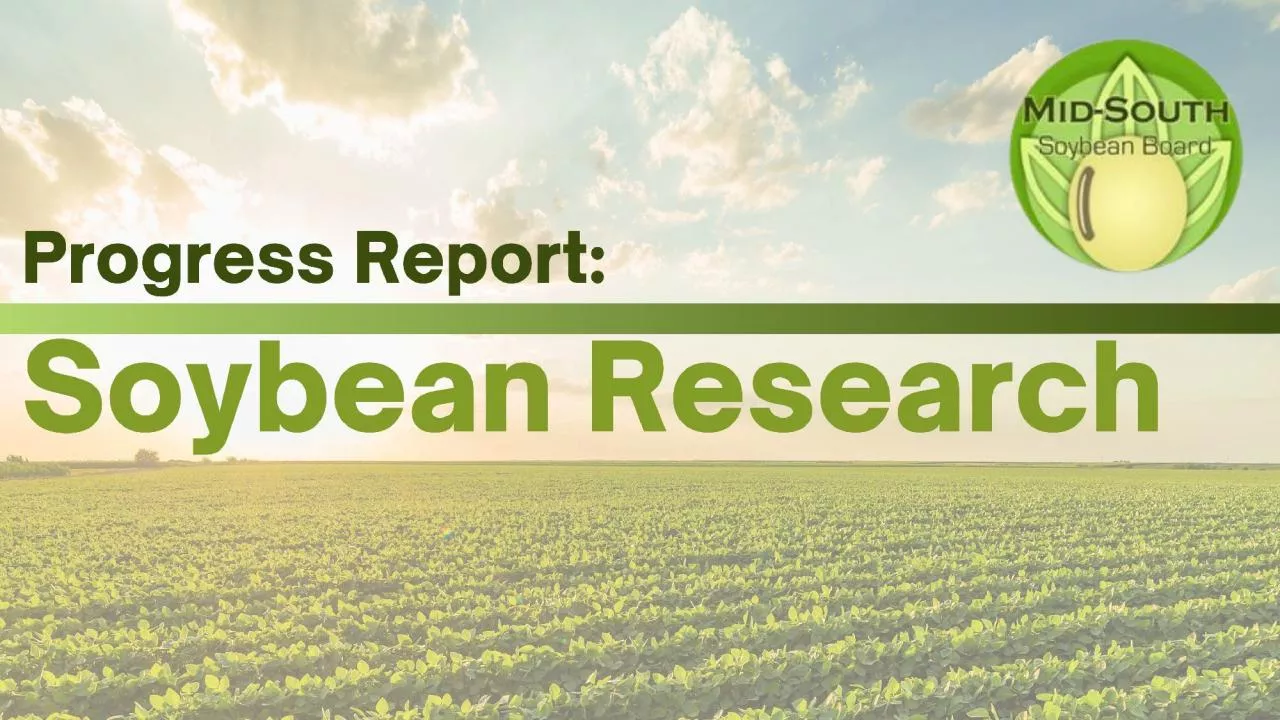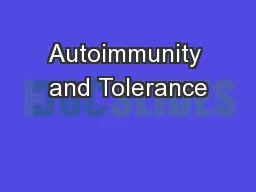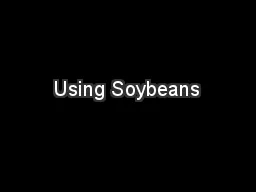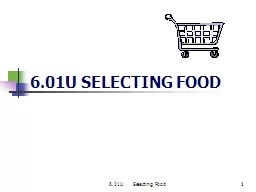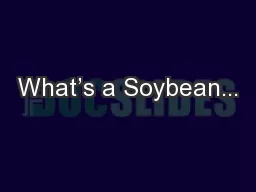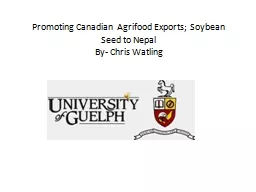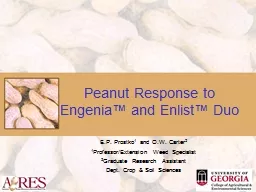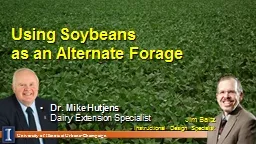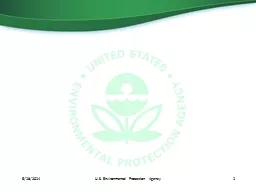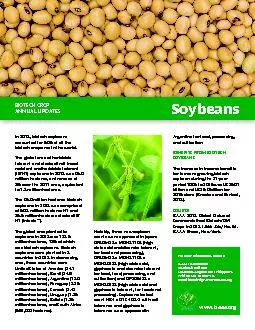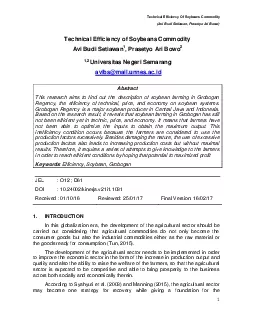PPT-Screening and Selecting Non-Xtend Soybeans for Dicamba Tolerance (2020)
Author : RockinOut | Published Date : 2022-08-03
2019 and 2020 off target drift negatively affected yields 4841 plots 2020 1500 genotypes7500 plots tested elite lines exotic RILs time studies Damage scores and
Presentation Embed Code
Download Presentation
Download Presentation The PPT/PDF document "Screening and Selecting Non-Xtend Soybea..." is the property of its rightful owner. Permission is granted to download and print the materials on this website for personal, non-commercial use only, and to display it on your personal computer provided you do not modify the materials and that you retain all copyright notices contained in the materials. By downloading content from our website, you accept the terms of this agreement.
Screening and Selecting Non-Xtend Soybeans for Dicamba Tolerance (2020): Transcript
Download Rules Of Document
"Screening and Selecting Non-Xtend Soybeans for Dicamba Tolerance (2020)"The content belongs to its owner. You may download and print it for personal use, without modification, and keep all copyright notices. By downloading, you agree to these terms.
Related Documents

